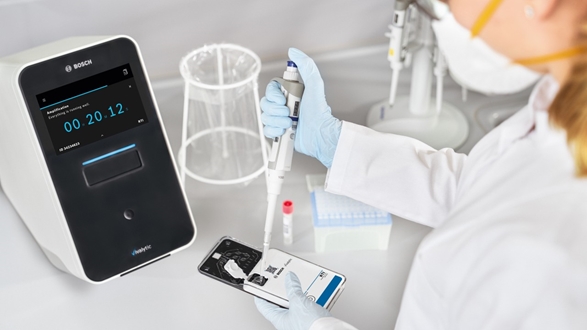Working onboard a superyacht is a challenging job in normal circumstances. On top of managing guest profiles, itineraries and needs, captains and crew now have the additional task of mitigating the well-known risks of a pandemic.
For some vessels the emergence of COVID-19 has resulted in such measures as more rigorous cleaning and regular mask use and for others it’s been the purchase of their own testing equipment.
Having an onboard testing device is by no means a solution for every yacht, but over the past half a year, MedAire has not only seen a growth in testing equipment but also a demand for medical consultancy, as the health agenda comes to the fore.
Deciding whether such an option will work for you requires careful consideration of a number of factors – you’ll have to think about why you want to test, who you want to test and how often you want to test. Alongside that you’ll need a level of medical understanding.
HOW ONE VESSEL USES THEIR TESTING EQUIPMENT TO MAINTAIN SAFE OPERATIONS
Through the guidance of MedAire, one of our customers recently implemented a solution which includes the Bosch Vivalytic PCR machine. The Medic onboard, who uses the equipment, told us that:
"With rapid COVID-19 testing onboard we are able to not only do screening for joining guests and crew as well as tour operators and pilots, we are able to confirm or rule out COVID-19 if a crew/guest presents with symptoms.
"It is a great and very useful investigative tool for the Medical Bay to have."
Brent Palmer, the Director of Education at MedAire, (virtually) leads the training of Covid testing equipment onboard a number of vessels and says: "the ability to administer onboard testing provides validation that a vessel’s risk mitigation strategies (point of entry screening, temperature checks, mask usage) in protecting against COVID-19 have been effective."
HOW THE TESTING PROCESS WORKS
Some Covid testing machines, like the Bosch Vivalytic, provide results in between 40 minutes and 3 hours and the process works as follows:
1. A sample is taken using a swab
2. The swab is broken into liquid inside a sample tube
3. After two minutes, a pipette is used to take a sample of the liquid from the tube to add into the cartridge.
4. The machine processes the cartridge and displays the results as a print-out and on the screen.
LOOKING TOWARDS A POST-PANDEMIC WORLD
While a worldwide vaccination rollout provides hope for a return to normality, rapid testing looks to play its part well into the future.
It's important to also note that many of the devices we recommend don’t just test for COVID-19, they also enable you to test for STIs and other viruses, like Influenza A and B, Dengue and Zika to name a few.
This means that such equipment is not just a solution to the current pandemic, but an investment in the future health of your crew.
HOW TO SET UP YOUR ONBOARD TESTING SOLUTION
MedAire only recommend solutions that are manufactured by companies with a strong background in medical testing.
To determine the most appropriate option for your vessel and effectively set it up, we would arrange a consultation call with a member of our medical team. Find out more on our website.






